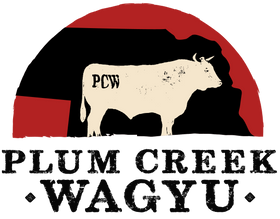The Economics of Wagyu: Understanding the Value of Luxury Beef
Wagyu beef, often referred to as the “Rolls-Royce” of the meat world, is synonymous with luxury, exclusivity, and unparalleled quality. But beyond its culinary allure, Wagyu beef represents a fascinating case study in high-end agricultural economics. From its breeding and production costs to its market demand and pricing, the economics of Wagyu offers insights into how value is created, sustained, and appreciated in a niche market.
The High Cost of Production
The premium price tag attached to Wagyu beef begins with its production. Raising Wagyu cattle is a labor-intensive and time-consuming process that demands careful attention to detail. These cattle are often pampered with specialized diets, which may include grains, rice straw, and even beer, to enhance the meat’s marbling.
This meticulous care extends over a longer period compared to other beef cattle, leading to higher costs in feed, labor, and overall management. The result is a product that commands a premium price, justified by the extraordinary quality and rarity of the meat.
Supply and Demand Dynamics
The global demand for Wagyu beef has seen a steady rise, driven by an increasing number of consumers willing to pay a premium for high-quality, luxury products. However, the supply of true Wagyu beef remains limited, particularly that which is certified and produced in Japan. This scarcity, combined with the high cost of production, naturally leads to higher prices in the marketplace.
In regions like the United States and Australia, where Wagyu cattle have been crossbred with local breeds, the supply has expanded, but these variants often differ in quality and price from authentic Japanese Wagyu. The limited supply of purebred Wagyu adds to its allure and economic value, reinforcing its status as a luxury good.
Market Pricing and Consumer Perception
Wagyu beef is priced significantly higher than other types of beef, often ranging from $100 to $300 per pound, depending on the grade and cut. This high price is not just a reflection of production costs but also the result of strategic positioning in the market. Wagyu is marketed as an exclusive, gourmet product, appealing to affluent consumers who associate high cost with superior quality and status.
Consumer perception plays a crucial role in the economics of Wagyu. The idea of indulging in a rare, luxurious product elevates the dining experience, making the high price more palatable. This perception is carefully cultivated through branding, storytelling, and the association of Wagyu with premium dining experiences.
The Future of Wagyu Economics
As the global appetite for Wagyu continues to grow, the economics of this luxury beef is likely to evolve. Emerging markets, particularly in Asia and the Middle East, are driving demand, while innovations in breeding and production may help to scale supply without compromising quality.
However, the core economic principles of scarcity, quality, and consumer perception will continue to underpin the value of Wagyu. For producers like Plum Creek Wagyu, maintaining these standards while adapting to new market dynamics will be key to sustaining the economic success of Wagyu beef in the years to come.
The economics of Wagyu is a compelling blend of tradition, scarcity, and consumer desire. Its high cost is justified not just by the quality of the product but by the intricate and costly process of producing it. As long as consumers continue to crave the unique experience that Wagyu provides, this luxury beef will remain a prized commodity in the global market, commanding premium prices and representing the pinnacle of culinary excellence.
Related Posts
Beyond the Steak: Creative Wagyu Recipes for Every Occasion
Take your Wagyu beyond the steak! From juicy burgers to slow-cooked short ribs and mouthwatering tacos, explore creative Wagyu recipes perfect for any occasion.
Mastering the Perfect Wagyu Steak: Cooking Techniques for Every Cut
Master the art of cooking Wagyu steak with expert techniques for grilling, pan-searing, and sous vide. Discover the best methods to bring out the rich marbling and unmatched flavor of every cut.
Pairing Wagyu with Whiskey, Wine, and Cocktails: The Best Drinks to Complement Wagyu Beef
Discover the best drink pairings for Wagyu beef! From rich whiskeys and bold wines to complex cocktails, find out how to complement the rich flavors of Wagyu with the perfect beverage!
Wagyu Myths Debunked: Separating Fact from Fiction
Wagyu beef is often surrounded by myths, from misconceptions about its price to confusion about its fat content. In this post, we debunk the most common myths about Wagyu beef, providing the facts that every meat lover should know.
Wagyu and the Farm-to-Table Movement: How Local Sourcing and Sustainable Ranching Impact Wagyu Quality
Explore how the farm-to-table movement is enhancing the quality of Wagyu beef through local sourcing and sustainable ranching practices. Learn how these practices contribute to better flavor, ethical production, and a positive environmental impact.








